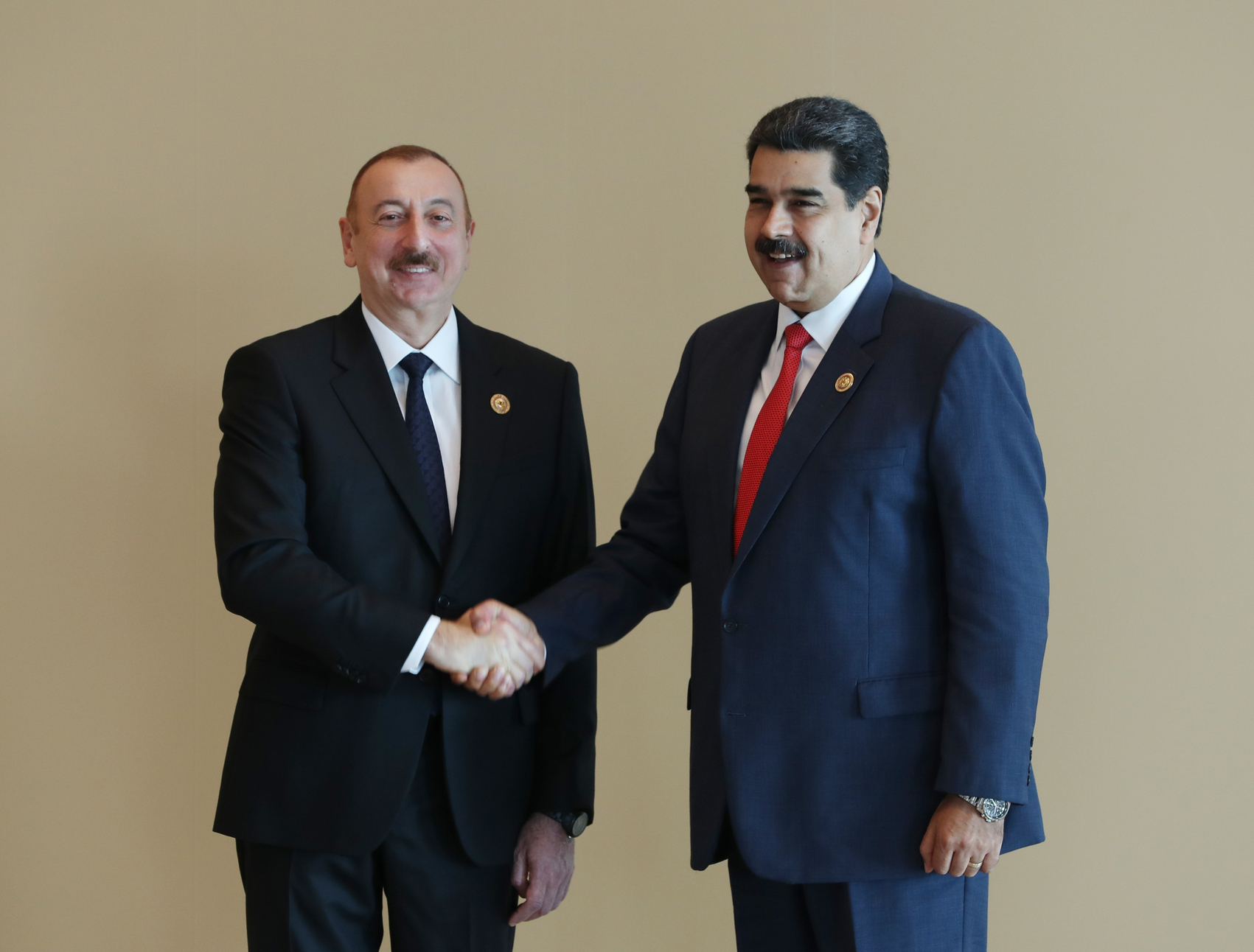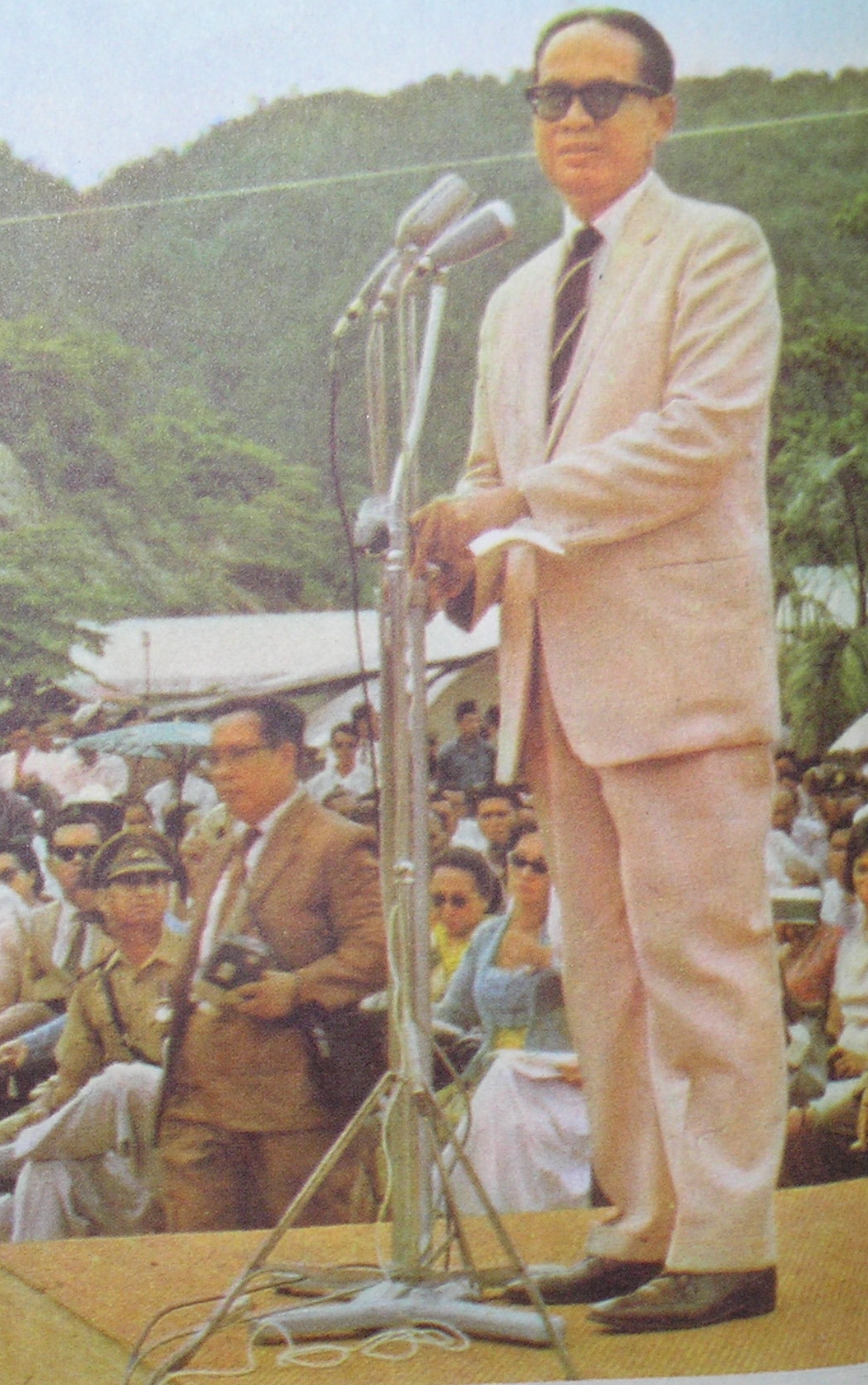|
Jakarta–Peking Axis
The Jakarta–Peking axis, also known as the Djakarta–Peking–Pyongyang–Hanoi–Phnom Penh Axis was a form of geopolitical alignment during the Cold War era, representing a strategic convergence between Indonesia, North Korea, and China. This political alignment was inaugurated in January 1965 as part of President Sukarno's foreign policy during Indonesia's Guided Democracy era. Although Indonesia maintained a nominally free and active foreign policy, Sukarno's administration exhibited strong anti-Western sentiments and gravitated towards communist countries. Political alignment A notable manifestation of this policy was Indonesia's confrontation with Malaysia. President Sukarno perceived the formation of the Malaysian federation as an act of Western imperialism in Asia. Consequently, when Malaysia was appointed a non-permanent member of the United Nations Security Council (UNSC), Indonesia withdrew from the United Nations in protest. The conflict between Indonesia and ... [...More Info...] [...Related Items...] OR: [Wikipedia] [Google] [Baidu] |
Sukarno
Sukarno (6 June 1901 – 21 June 1970) was an Indonesian statesman, orator, revolutionary, and nationalist who was the first president of Indonesia, serving from 1945 to 1967. Sukarno was the leader of the Indonesian struggle for independence from the Dutch East Indies, Dutch colonialists. He was a prominent leader of Indonesian National Party, Indonesia's nationalist movement during the colonial period and spent over a decade under Dutch detention until released by the Dutch East Indies campaign, invading Empire of Japan, Japanese forces in World War II. Sukarno and his fellow nationalists Collaboration with Imperial Japan#Dutch East Indies (Indonesia), collaborated to garner support for the Japanese war effort from the population, in exchange for Japanese aid in spreading nationalist ideas. Upon Surrender of Japan, Japanese surrender, Sukarno and Mohammad Hatta Proclamation of Indonesian Independence, declared Indonesian independence on 17 August 1945, and Sukarno was appoin ... [...More Info...] [...Related Items...] OR: [Wikipedia] [Google] [Baidu] |
Non-Aligned Movement
The Non-Aligned Movement (NAM) is a forum of 121 countries that Non-belligerent, are not formally aligned with or against any major power bloc. It was founded with the view to advancing interests of developing countries in the context of Cold War confrontation. After the United Nations, it is the largest grouping of states worldwide. The movement originated in the aftermath of the Korean War, as an effort by some countries to counterbalance the rapid bi-Polarity (international relations), polarization of the world during the Cold War, whereby two major powers formed blocs and embarked on a policy to pull the rest of the world into their orbits. One of these was the pro-Soviet socialist bloc whose best known alliance was the Warsaw Pact, and the other the pro-American capitalist group of countries, many of which belonged to NATO. In 1961, drawing on the principles agreed at the Bandung Conference of 1955, the Non-Aligned Movement was formally established in Belgrade, Socialist Fe ... [...More Info...] [...Related Items...] OR: [Wikipedia] [Google] [Baidu] |
CONEFO
The Conference of the New Emerging Forces (CONEFO) was an intergovernmental organization that existed from 1965 to 1966. CONEFO was an attempt by President Sukarno of Indonesia to create a new bloc of "emerging countries" that would be an alternative power centre to the United Nations and to the "old-established forces" — a category in which Sukarno included both the United States and the Soviet Union. It was intended to build on the legacy of the 1955 Bandung Conference and the Non-Aligned Movement, by asserting the interests of the Third World and a neutral posture towards the Cold War. CONEFO was officially established on 7 January 1965, after Sukarno's government objected to Malaysia becoming a non-permanent member of the UN Security Council, at a time of the low-level Indonesia–Malaysia confrontation between the two countries. An angry Sukarno took Indonesia out of the UN (the only country to have done so) and formed a rival world organization, having taken similar step ... [...More Info...] [...Related Items...] OR: [Wikipedia] [Google] [Baidu] |
Embassy Of Indonesia, Beijing
The Embassy of the Republic of Indonesia in Beijing (; zh, 印度尼西亚共和国驻华大使馆) is the diplomatic mission of the Republic of Indonesia to the China, People's Republic of China. The embassy is Dual accreditation, concurrently accredited to Mongolia. Indonesia also has three consulate generals in Guangzhou, Hong Kong, dan Shanghai. The first Indonesian ambassador to China was Arnold Mononutu (1953–1955). The current ambassador, Djauhari Oratmangun, was appointed by President of Indonesia, President Joko Widodo on 20 February 2018. History Diplomatic relations between Indonesia and China were established on 13 April 1950. The Indonesian government sent Isak Mahdi from the Embassy of Indonesia, Bangkok, Indonesian embassy in Bangkok to Beijing to establish a diplomatic mission. Mahdi was then appointed Chargé d'affaires of the mission until the arrival of the first Indonesian ambassador to China, Arnold Mononutu. The period between the failed 30 September M ... [...More Info...] [...Related Items...] OR: [Wikipedia] [Google] [Baidu] |
30 September Movement
The Thirtieth of September Movement (, also known as G30S, and by the syllabic abbreviation Gestapu for ''Gerakan September Tiga Puluh'', Thirtieth of September Movement, also unofficially called Gestok, for ''Gerakan Satu Oktober'', or First of October Movement) was a self-proclaimed organization of Indonesian National Armed Forces members. In the early hours of 1 October 1965, they assassinated six Indonesian Army generals in an abortive '' coup d'état''. Later that morning, the organization declared that it was in control of media and communication outlets and had taken President Sukarno under its protection. By the end of the day, the coup attempt had failed in Jakarta. Meanwhile, in central Java there was an attempt to take control over an army division and several cities. By the time this rebellion was put down, two more senior officers were dead. In the days and weeks that followed, the army, socio-political, and religious groups blamed the coup attempt on the Co ... [...More Info...] [...Related Items...] OR: [Wikipedia] [Google] [Baidu] |
New Order (Indonesia)
The New Order (, abbreviated ''Orba'') describes the regime of the second Indonesian President Suharto from his rise to power in 1966 until his resignation in 1998. Suharto coined the term upon his accession and used it to contrast his presidency with that of his predecessor Sukarno (retroactively dubbed the "Old Order" or ). Immediately following the attempted coup in 1965, the political situation was uncertain, and Suharto's New Order found much popular support from groups wanting a separation from Indonesia's problems since its independence. The 'generation of 66' ('' Angkatan 66'') epitomised talk of a new group of young leaders and new intellectual thought. Following Indonesia's communal and political conflicts, and its economic collapse and social breakdown of the late 1950s through to the mid-1960s, the "New Order" was committed to achieving and maintaining political order, economic development, and the removal of mass participation in the political process. The featu ... [...More Info...] [...Related Items...] OR: [Wikipedia] [Google] [Baidu] |
Peaceful Coexistence
Peaceful coexistence () was a theory, developed and applied by the Soviet Union at various points during the Cold War in the context of primarily Marxist–Leninist foreign policy and adopted by Soviet-dependent socialist states, according to which the Socialist Bloc could peacefully coexist with the capitalist bloc (i.e., U.S.-allied states). This was in contrast to the antagonistic contradiction principle that socialism and capitalism could never coexist in peace. The Soviet Union applied it to relations between the western world, particularly NATO countries, and nations of the Warsaw Pact. Debates over differing interpretations of peaceful coexistence were one aspect of the Sino-Soviet split in the 1950s and 1960s. During the 1970s, the People's Republic of China under the leadership of its founder, Mao Zedong, argued that a belligerent attitude should be maintained towards capitalist countries, and so initially rejected the peaceful coexistence theory as essentially Marxist ... [...More Info...] [...Related Items...] OR: [Wikipedia] [Google] [Baidu] |
Communist Party Of Indonesia
The Communist Party of Indonesia (Indonesian language, Indonesian: ''Partai Komunis Indonesia'', PKI) was a communist party in the Dutch East Indies and later Indonesia. It was the largest non-ruling communist party in the world before its Indonesian mass killings of 1965–66, violent disbandment in 1965. The party had two million members in the 1955 elections, with 16 percent of the national vote and almost 30 percent of the vote in East Java. At the time, it was the largest communist party in the world after the Chinese and Soviet communist parties. During most of the period immediately following the Indonesian Independence until the eradication of the PKI in 1965, it was a legal party operating openly in the country. Accused of responsibility for the 30 September Movement, 1965 army-led coup attempt, the party was banned by General Suharto in March 1966. History Forerunners The Indies Social Democratic Association (Dutch language, Dutch: ''Indische Sociaal-Democratische ... [...More Info...] [...Related Items...] OR: [Wikipedia] [Google] [Baidu] |
Fifth Force (Indonesia)
The Fifth Force () was a proposed military branch of the Armed Forces of the Republic of Indonesia. Conceived by the Indonesian Communist Party (PKI), it represented an initiative aimed at mobilizing armed workers and peasants. Background During the Guided Democracy Era, the elements of the Armed Forces of the Republic of Indonesia (ABRI) comprised the Army, Navy, and Air Force and the Police Force. Each of these elements functioned as a Ministry responsible directly to President Sukarno. Although there was a Commander of the Armed Forces acting as the Coordinating Minister for the Ministry of Defense, their role was limited to administrative duties and did not include command authority. The Police Force was part of the Indonesian Ministry of Defense until 1999, when it became an independent entity. Similarly, during the independence revolution, the Police Force was under the jurisdiction of the Department of Home Affairs. Development D.N. Aidit's proposal During Gui ... [...More Info...] [...Related Items...] OR: [Wikipedia] [Google] [Baidu] |
Zhou Enlai
Zhou Enlai ( zh, s=周恩来, p=Zhōu Ēnlái, w=Chou1 Ên1-lai2; 5 March 1898 – 8 January 1976) was a Chinese statesman, diplomat, and revolutionary who served as the first Premier of the People's Republic of China from September 1954 until Death of Zhou Enlai, his death in January 1976. Zhou served under Chairman Mao Zedong and aided the Chinese Communist Party, Communist Party in rising to power, later helping consolidate its control, form its Foreign policy of China, foreign policy, and develop the Economy of China, Chinese economy. As a diplomat, Zhou served as the Chinese Foreign Minister of the People's Republic of China, foreign minister from 1949 to 1958. Advocating peaceful coexistence with Western Bloc, the West after the Korean War, he participated in the 1954 Geneva Conference and the 1955 Bandung Conference and helped orchestrate 1972 Nixon visit to China, Richard Nixon's 1972 visit to China. He helped devise policies regarding disputes with the United States, ... [...More Info...] [...Related Items...] OR: [Wikipedia] [Google] [Baidu] |
Subandrio
Subandrio (15 September 1914 – 3 July 2004) was an Indonesian politician Foreign Minister and First Deputy Prime Minister of Indonesia under President Sukarno. Removed from office following the failed 1965 coup, he spent 29 years in prison. The spelling "Subandrio" has been official in Indonesia since 1947 but the older spelling Soebandrio is still sometimes used. Early career Subandrio was born in Malang, East Java, and educated at the Sekolah Tinggi Kedokteran Jakarta (GHS) in Jakarta. As a medical student, he was active in the independence movement. During World War II, while practicing medicine, he worked with anti-Japanese resistance forces. His wife, Hurustiati Subandrio, was also a politically active medical doctor. After the war, he was appointed secretary-general of the information ministry. After 1945 Subandrio became a supporter of the nationalist leader Sukarno and was sent as Sukarno's special envoy in Europe, establishing an information office in London in 1 ... [...More Info...] [...Related Items...] OR: [Wikipedia] [Google] [Baidu] |






